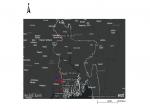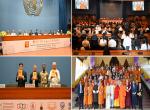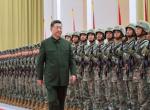Summary
Discrepancies between U.S. and Pakistani data on foreign aid reveal a lack of transparency and accountability in Pakistan’s fund management. The U.S. reports billions in aid, while Pakistan records much less, suggesting potential under-reporting or misallocation. This issue could hinder the effective use of aid and future investments, making transparency essential for Pakistan's development.
Since Pakistan’s inception in 1947, bilateral and multilateral assistance has been a key element of Pakistan's economy. The United States, France, Japan, the United Kingdom, and Germany have been significant contributors to various infrastructure projects across the country. Pakistan has also received substantial economic assistance over the decades from multilateral institutions such as the Asian Development Bank, the International Bank for Reconstruction and Development, the Islamic Development Bank, and the European Union. The primary purpose of these grants and loans has been to develop foundational infrastructure, including dam construction, medical centres, and agricultural initiatives. However, the transparency of foreign aid and grants in Pakistan's official records remains a major concern, as these records are not comprehensive enough to verify the allocation of funds provided by donors.[1]
Aid and Grants from the United States of America
The bilateral relationship between the United States and Pakistan has a history extending over six decades, originating with Pakistan's independence in 1947. This enduring partnership has been marked by extensive collaboration across various sectors. The United States has introduced numerous innovative initiatives to achieve shared objectives and promote development in Pakistan.
In the 1950s and 60s, the United States played a crucial role by being among the first nations to recognize Pakistan as an independent state. This recognition was accompanied by substantial support for foundational infrastructure projects. Notable examples include the establishment of institutions such as the Institute for Business Administration, and the Jinnah Postgraduate Medical Centre, and contributions to large-scale projects like the Indus Basin Project and the Faisalabad Agriculture Institute. Moreover, the United States significantly contributed to Pakistan's agricultural sector through initiatives such as the Green Revolution, which revolutionized agricultural productivity.
During the late 1960s and 1970s, the United States emerged as a primary donor of aid and grants for infrastructure development, particularly in the construction of dams and Hydroelectric projects. Iconic projects such as the Mangla and Tarbela dams, pivotal in generating 70% of Pakistan's electricity, stand as enduring symbols of this collaboration. Additionally, U.S. funding supported the establishment of critical infrastructure like the Guddu power station in Sindh and the Lahore University of Management Sciences, now renowned for housing one of Pakistan's premier business schools. This assistance spanned multiple sectors including energy, economic development, governance, and healthcare infrastructure.[2]
Pakistan's vulnerability to natural disasters and other crises has also been met with substantial U.S. support. In recent years alone, the United States has allocated approximately $7.7 billion towards rebuilding and reinforcing Pakistan's infrastructure.
Year-wise and Sectoral Breakdown of Fund Allocation
Pakistan has relied heavily on foreign assistance to stabilize its economy and address various challenges. Between 1960 and 2002, the country received a total of $73.1 billion in foreign development aid. The United States has been the largest bilateral contributor, providing over $19 billion to Pakistan; this support averaged more than $2 billion annually from 2002 to 2010, primarily directed towards counterterrorism efforts. Under the Enhanced Partnership with Pakistan Act of 2009, also known as Kerry-Lugar-Berman, the United States pledged $7.5 billion in non-military aid over five years,[3] signalling a substantial commitment to Pakistan's development agenda.
Foreign Assistance from the United States of America in millions of USD
| Year | Obligations | Disbursement |
|---|---|---|
| 2013 | 760 | 810 |
| 2014 | 980 | 1000 |
| 2015 | 1100 | 1000 |
| 2016 | 790 | 1000 |
| 2017 | 830 | 900 |
| 2018 | 420 | 480 |
| 2019 | 680 | 770 |
| 2020 | 200 | 370 |
| 2021 | 180 | 250 |
| 2022 | 190 | 230 |
| 2023 | 160 | 260 |
| TOTAL | 6290 | 7070 |
Source: US Agency For International Development (USAID), (Compiled Data from 2013-2023)[4]
In 2013, the U.S. allocated significant resources towards governance and infrastructure, each receiving ($180 million), alongside an additional ($120 million) dedicated to humanitarian efforts. This focus on governance was sustained into 2014, with ($410 million) directed towards it, along with $230 million for infrastructure and ($120 million) for humanitarian assistance. By 2015, aid for governance reached its peak at $580 million, accompanied by notable investments in infrastructure ($130 million) and health and population ($100 million). The emphasis on governance continued into 2016 and 2017, with allocations of ($370 million) and $430 million, respectively. During these years, the U.S. also channelled significant resources into humanitarian aid and infrastructure, while making notable contributions to education, particularly in 2017, when ($100 million) was provided.
A shift occurred in 2018, marking a more balanced allocation of U.S. aid towards governance ($100 million), infrastructure ($110 million), and education ($80 million). However, by 2019, there was a marked increase in governance aid, which surged to ($460 million), while infrastructure aid remained at $110 million. Humanitarian assistance stayed steady at ($55 million). In the early 2020s, the focus on governance began to diminish, with allocations decreasing from ($90 million) in 2020 to ($67 million) by 2021. Humanitarian aid varied during this period, peaking at ($ 63 million) in 2022. Health and population programs received heightened support, with ($46 million) allocated in 2021. By 2023, U.S. aid was distributed as follows: ($55 million) for humanitarian assistance, ($25 million) for governance, ($20 million) each for health and administrative costs, and ($9.8 million) for infrastructure.[5]
This decade-long review underscores the U.S.'s sustained commitment to supporting Pakistan’s governance, infrastructure, and humanitarian needs, with aid adjustments reflecting evolving priorities and emerging challenges.
An Overview of Key Projects Financed by the US Government
The United States of America has played a pivotal role as the primary benefactor of Pakistan, significantly contributing to the advancement of its economic infrastructure, governance, security, and humanitarian endeavours. In the annals of history, a notable testament to this enduring partnership can be found in the year 2013 when the US Government pledged a sum of ($170 million) towards infrastructure development, an additional $170 million earmarked for healthcare initiatives, and ($130 million) allocated to bolster the healthcare sector. These funds were dedicated to various critical programs including the USAID power distribution project, infrastructure and transportation services, the international narcotics control and law enforcement efforts, the Gomal dam project, and the Teacher Education project.
As the chronicles unfurled into the year 2014, a discernible shift in US aid allocation transpired towards foreign military assistance financing, specifically aimed at fortifying Pakistan's defence capabilities under the auspices of conflict, peace, and security operations, in close collaboration with the US Department of Defense. The subsequent year of 2015 witnessed a surge in foreign military assistance, reaching a significant milestone of ($265 million), primarily channelled into equipping the Pakistani defence forces with essential arms and ammunition. A pivotal endeavour during this period was the substantial funding directed towards the FATA infrastructure project, aimed at enhancing connectivity through the construction of vital roads, access to clean water, and electrical infrastructure in rural Pakistan. Moreover, this initiative sought to foster trade relations between Pakistan and Afghanistan while simultaneously enhancing irrigation systems across the countryside.
In 2016, there was a significant increase in military financing from the United States, surpassing ($253 million). This funding was strategically allocated to crucial projects, including the construction of the Quetta-Chaman highway and the implementation of an emergency food security program to address urgent humanitarian needs. Additionally, endeavours like the Pakistan Reading Project, which focused on enhancing elementary education in rural areas, and initiatives like the Sindh Basic Education Program, saw the commitment to enhance educational infrastructure in Pakistan. Pakistan's notable financial investments were also directed towards energy projects, including the Golen Gol hydropower project, the Mangala Dam rehabilitation, and the Gharoketibandar wind power initiative.
In the succeeding year of 2018, a significant reallocation of US funds towards energy initiatives materialized, with substantial contributions towards the Kurram Tangi Dam project executed through the Water and Power Development Authority. Furthermore, strategic funding was channelled into the Pakistan Country Strategic Planning and FATA for Performance Management Support Contract, indicative of a holistic approach towards capacity-building and governance enhancement. The year 2019 witnessed a resurgence in foreign military financing programs, with a considerable allocation of $368 million towards bolstering Pakistan's defence capabilities, alongside investments in critical projects such as the Mangala dam and humanitarian aid through the UNHCR emergency response team.
As the global landscape evolved, the year 2020 reasserted the commitment to sustainable development through initiatives like the Sindh Municipal Service Development Program and the Khyber Pakhtunkhwa Municipal Service Program. Concurrently, amidst escalating regional challenges, the US extended support to Afghanistan's regional refugee preparedness and global health supply chain initiatives, reflecting a steadfast commitment to addressing pressing health and humanitarian needs. In 2022, amid food shortages exacerbated by economic uncertainties, the US State Agency provided ($22 million) in emergency food assistance to Pakistan, signalling a continued alliance in times of crisis.[6]
In the year 2023, as Pakistan grappled with persistent food insecurity and natural disasters, emergency food assistance remained a cornerstone of US support, providing vital relief to affected provinces. Concurrently, investments in the power sector underscored a commitment to sustainable infrastructure development, further solidifying the enduring partnership between the United States and Pakistan in advancing mutual prosperity and resilience in the face of challenges.
(in millions of USD)
| Year | CHINA | FRANCE | GERMANY | JAPAN | SAUDI ARABIA | USA | UK | AUSTRALIA |
|---|---|---|---|---|---|---|---|---|
| 2013-14 | 7.84 | 3.14 | 20.76 | 19.2 | 26.66 | 150 | 534.4 | 2.67 |
| 2014-15 | 123.9 | 6.52 | 8.95 | 79.65 | 53.5 | 43 | 49.83 | - |
| 2015-16 | 4.52 | 0.13 | 56.84 | 38.09 | 16.1 | 677.3 | 112.88 | - |
| 2016-17 | 21.17 | 0.15 | 1.14 | 10.71 | 22 | 82.32 | 118 | - |
| 2017-18 | 4 | 0.17 | 5.69 | 26.15 | 18.61 | 46.86 | 1.62 | - |
| 2018-19 | 2.42 | 0.73 | 12.67 | 3.05 | 6.01 | 79.31 | 0.05 | - |
| 2019-20 | 4 | - | 17.65 | 5.01 | 0.27 | 32.49 | - | - |
| 2020-21 | 6.25 | - | 8.08 | 11.2 | 14.39 | 21.6 | - | - |
| 2021-22 | 0.57 | - | 11.87 | 26.41 | - | - | - | - |
| 2022-23 | 9.47 | - | 39.87 | 16.63 | - | - | - | - |
| 2023-24 | - | - | - | 53.99 | - | - | - | - |
| Total | 180 | 11 | 183.5 | 290 | 157.5 | 1131 | 814 | 2.67 |
Source: Economic Affairs Division Pakistan Government (Compiled data from 2013-2024)[7]
The table provides an overview of the funds that Pakistan has received from different nations between 2013–2014 and 2023–2024. Additionally, the total sum for every nation is given.
Overall, the United States provided ($1,131 million) in grants over the specified period, with the most significant contribution of ($677.26 million ($814 million) in grants. In the year 2014 -2015, the UK was given ($534.4 million) and contributions in subsequent years were significantly lower. Japan has contributed ($290 million) in total; major funding was made in 2014–2015 ($79.65 million), and the country has continued to support the program in subsequent years, especially in 2021–2022 ($26.41 million).
Saudi Arabia contributed ($157.5 million) in total, with a noteworthy high of ($53.50 million) in 2014–2015. Over time, contributions have fluctuated and have decreased recently. Germany has contributed a total of ($ 183.51 million), with a significant increase of ($56.84 million) in 2015–2016 and ($39.87 million in 2023–2024. China has given ($180 million) in total, with notable contributions of ($123.89 Million) in 2014–2015 and lesser but steady contributions in subsequent years. France contributed a total of ($ 11 million), which was dispersed throughout time. In 2023–2024, Australia contributed a total of $2.67 million.
Why US Source
The availability and accessibility of U.S. sources of foreign aid are generally more robust compared to those from other countries due to several key factors. First, the U.S. government agencies, like USAID, are required to maintain detailed and publicly accessible records of foreign aid disbursements, reflecting a broader culture of transparency and accountability. These records are easily accessible online, often supplemented with comprehensive reports, datasets, and analysis that make it easier for researchers to obtain reliable and detailed information.
On the other hand, sources from other countries, including Pakistan, often lack this level of transparency and accessibility. Government agencies may not be as rigorous in maintaining or publishing detailed records, and when they do, the data might be fragmented, outdated, or obscured by bureaucratic processes. This opacity is compounded by potential issues of misreporting or under-reporting, as seen in the discrepancies between U.S. and Pakistani data. Consequently, researchers often find U.S. sources more reliable and straightforward to access, while data from other countries may require more effort to obtain and verify, hindering comprehensive and accurate analysis.[8]
Discrepancies in Reporting: A challenge to Accountability in Pakistan
In recent decades, Pakistan has received assistance from various countries but has also struggled with poor governance. Like many developing nations, Pakistan relies heavily on foreign aid to meet its financial needs. However, it is evident that this aid has not significantly benefited the country, as reflected in the persistently low levels of key social indicators, such as employment, health, and education.
The low level of social indices, such as employment, health, and education, indicates that foreign aid has not helped the nation. The savings and investment gap widens because of the foreign assistance inflows are not being utilized for economic development. Regarding foreign aid, two opinions are prevalent. According to one perspective, assistance weakens government responsibility to the people as it enriches the coffers of dishonest politicians and bureaucrats. In developing nations, foreign aid is either abused or utilized to purchase inappropriate technology, increase the wealth of bureaucracy, and support bigger, inefficient, and corrupt governments.[9]
The discrepancy between FDI figures from U.S. sources and Pakistani government data is a significant concern for researchers analysing economic assistance in Pakistan. The differences highlight potential biases and inaccuracies in Pakistani reporting, reflecting a broader issue of transparency and accountability in the country's handling of foreign aid and investments.
U.S. data presents a substantial investment and aid influx into Pakistan over several decades, emphasizing consistent and diversified support across various sectors, including infrastructure, education, health, and military. The figures suggest that from 2002 to 2010, the U.S. provided over $19 billion primarily for counterterrorism, with an additional ($7.5 billion in non-military aid through the Enhanced Partnership with Pakistan Act of 2009). Recent U.S. aid from 2013 to 2023 shows a total disbursement of $7.07 billion, covering projects in energy, health, education, and infrastructure development. Conversely, Pakistani government data shows markedly lower figures for the same period, with the U.S. contributions totalling only $1.131 billion.[10] This stark contrast suggests potential underreporting or misallocation of funds, raising questions about the accuracy of Pakistani financial records and the integrity of government institutions. The Pakistani data not only underestimates U.S. contributions but also lacks detail on the allocation and utilization of funds, which further obscures the true impact of foreign aid on the country's development.
The disparity between these sources underscores a broader issue of governance and accountability in Pakistan. The opaque nature of financial reporting and the apparent bias in government records can undermine trust in public institutions and deter future foreign investments. This lack of transparency hinders the effective use of foreign aid, as funds may be misallocated or siphoned off, failing to reach intended development projects or populations in need.
The implications of this discrepancy are significant. For policymakers and researchers, understanding the true extent and impact of foreign aid is crucial for designing effective development strategies and ensuring sustainable economic growth. For international donors, the lack of transparency may necessitate stricter monitoring and evaluation mechanisms to ensure that aid reaches its intended purposes and contributes to tangible improvements in the recipient country.[11]
The substantial differences in FDI figures from U.S. and Pakistani sources highlight critical issues of transparency, accountability, and governance in Pakistan. Addressing these challenges is essential to ensure that foreign aid and investments are effectively utilized to foster development and improve the socioeconomic conditions in the country.[12]
Conclusion
In conclusion, Pakistan's dependence on foreign aid, particularly from the US, raises concerns about transparency and its impact on development. While the US claims billions in donations spread across various sectors, Pakistan's records show a much smaller sum. This significant discrepancy points towards potential under-reporting or misallocation of funds by Pakistani authorities. This lack of transparency not only deters future investments but also hinders the efficient use of foreign aid. The allocated funds might not reach the intended projects or the people in need. To ensure foreign aid truly benefits Pakistan's development, overcoming these challenges of transparency and accountability is essential.
Endnotes
[1] “Annual report on Foreign Aid”, Ministry of Economic Affairs division Pakistan, 31st May 2024
[2] “History”, United States Agency for International Development, USAID
[3] “Who benefits from the US Aid to Pakistan”, Carnegie Endowment for International Peace, 30 September 2011
[4] “Foreign Assistance by Country, Pakistan United States Agency for International Development, USAID Initiative
[5] “ Foreign Assistance by Country, Pakistan”, United States Agency for International Development, USAID Initiative
[6] “Pakistan, South Asia, US Foreign Assistance”, United States Agency for International Development, USAID Initiative
[7] “Annual Report on Foreign Aid”, Ministry of Economic Affairs division Pakistan, 31st May 2024
[8] “USAID: The Value of Transparent Data in Humanitarian Crises”, International Aid Transparency Initiative 5th August 2020
[9] ADEEBA SARWAR, MUSHTAQ HASSAN AND TAHIR MAHMOOD*, “FOREIGN AID AND GOVERNANCE IN PAKISTAN”, Pakistan Economic and Social Review 2015, Volume -53, PP -149-176
[10] “Aid to Pakistan by the Numbers”, Centre for Global Development, September 2013
[11] “Mukund Padmanabhan, U.S. worried Pakistan was Misusing War Funds”, The Hindu, 17 October 2016
[12] “ Azeem Ibrahim U.S. Aid to Pakistan—U.S. Taxpayers Have Funded Pakistani Corruption”, Belfer Center for Science and International Affairs, Harvard Kennedy School, August 2009
(The paper is the author’s individual scholastic articulation. The author certifies that the article/paper is original in content, unpublished and it has not been submitted for publication/web upload elsewhere, and that the facts and figures quoted are duly referenced, as needed, and are believed to be correct). (The paper does not necessarily represent the organisational stance... More >>
Image source: https://www.thestatesman.com/wp-content/uploads/2017/08/iStock-500169958.jpg











Post new comment